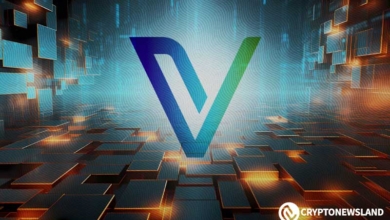Bitget: Top 4 in global daily trading volume!
Please also display BTC in AR62.03%
New listings on Bitget : Pi Network
BTC/USDT$83952.21 (+1.17%)Fear at Greed Index30(Fear)
Altcoin season index:0(Bitcoin season)
Coins listed in Pre-MarketPAWS,WCTTotal spot Bitcoin ETF netflow -$64.9M (1D); -$169.2M (7D).Welcome gift package para sa mga bagong user na nagkakahalaga ng 6200 USDT.Claim now
Trade anumang oras, kahit saan gamit ang Bitget app. I-download ngayon
Bitget: Top 4 in global daily trading volume!
Please also display BTC in AR62.03%
New listings on Bitget : Pi Network
BTC/USDT$83952.21 (+1.17%)Fear at Greed Index30(Fear)
Altcoin season index:0(Bitcoin season)
Coins listed in Pre-MarketPAWS,WCTTotal spot Bitcoin ETF netflow -$64.9M (1D); -$169.2M (7D).Welcome gift package para sa mga bagong user na nagkakahalaga ng 6200 USDT.Claim now
Trade anumang oras, kahit saan gamit ang Bitget app. I-download ngayon
Bitget: Top 4 in global daily trading volume!
Please also display BTC in AR62.03%
New listings on Bitget : Pi Network
BTC/USDT$83952.21 (+1.17%)Fear at Greed Index30(Fear)
Altcoin season index:0(Bitcoin season)
Coins listed in Pre-MarketPAWS,WCTTotal spot Bitcoin ETF netflow -$64.9M (1D); -$169.2M (7D).Welcome gift package para sa mga bagong user na nagkakahalaga ng 6200 USDT.Claim now
Trade anumang oras, kahit saan gamit ang Bitget app. I-download ngayon

May kaugnayan sa coin
Price calculator
Kasaysayan ng presyo
Paghula ng presyo
Teknikal na pagsusuri
Gabay sa pagbili ng coin
kategorya ng Crypto
Profit calculator

VeChain presyoVET
Listed
Quote pera:
PHP
₱1.26+1.47%1D
Price chart
TradingView
Last updated as of 2025-04-05 03:01:09(UTC+0)
Market cap:₱108,530,515,887.18
Ganap na diluted market cap:₱108,530,515,887.18
Volume (24h):₱2,250,122,289.43
24h volume / market cap:2.07%
24h high:₱1.29
24h low:₱1.22
All-time high:₱15.94
All-time low:₱0.09612
Umiikot na Supply:85,985,040,000 VET
Total supply:
85,985,041,177VET
Rate ng sirkulasyon:100.00%
Max supply:
--VET
Price in BTC:0.{6}2625 BTC
Price in ETH:0.{4}1214 ETH
Mga kontrata:--
Ano ang nararamdaman mo tungkol sa VeChain ngayon?
Tandaan: Ang impormasyong ito ay para sa sanggunian lamang.
Presyo ng VeChain ngayon
Ang live na presyo ng VeChain ay ₱1.26 bawat (VET / PHP) ngayon na may kasalukuyang market cap na ₱108.53B PHP. Ang 24 na oras na dami ng trading ay ₱2.25B PHP. Ang presyong VET hanggang PHP ay ina-update sa real time. Ang VeChain ay 1.47% sa nakalipas na 24 na oras. Mayroon itong umiikot na supply ng 85,985,040,000 .
Ano ang pinakamataas na presyo ng VET?
Ang VET ay may all-time high (ATH) na ₱15.94, na naitala noong 2021-04-17.
Ano ang pinakamababang presyo ng VET?
Ang VET ay may all-time low (ATL) na ₱0.09612, na naitala noong 2020-03-13.
Bitcoin price prediction
Kailan magandang oras para bumili ng VET? Dapat ba akong bumili o magbenta ng VET ngayon?
Kapag nagpapasya kung buy o mag sell ng VET, kailangan mo munang isaalang-alang ang iyong sariling diskarte sa pag-trading. Magiiba din ang aktibidad ng pangangalakal ng mga long-term traders at short-term traders. Ang Bitget VET teknikal na pagsusuri ay maaaring magbigay sa iyo ng sanggunian para sa trading.
Ayon sa VET 4 na teknikal na pagsusuri, ang signal ng kalakalan ay Sell.
Ayon sa VET 1d teknikal na pagsusuri, ang signal ng kalakalan ay Sell.
Ayon sa VET 1w teknikal na pagsusuri, ang signal ng kalakalan ay Malakas na nagbebenta.
Ano ang magiging presyo ng VET sa 2026?
Batay sa makasaysayang modelo ng hula sa pagganap ng presyo ni VET, ang presyo ng VET ay inaasahang aabot sa ₱1.22 sa 2026.
Ano ang magiging presyo ng VET sa 2031?
Sa 2031, ang presyo ng VET ay inaasahang tataas ng +3.00%. Sa pagtatapos ng 2031, ang presyo ng VET ay inaasahang aabot sa ₱2.9, na may pinagsama-samang ROI na +129.37%.
VeChain price history (PHP)
The price of VeChain is -46.25% over the last year. The highest price of VET in PHP in the last year was ₱4.53 and the lowest price of VET in PHP in the last year was ₱1.09.
TimePrice change (%) Lowest price
Lowest price Highest price
Highest price 
 Lowest price
Lowest price Highest price
Highest price 
24h+1.47%₱1.22₱1.29
7d-7.17%₱1.19₱1.37
30d-24.58%₱1.19₱1.73
90d-56.27%₱1.19₱3.3
1y-46.25%₱1.09₱4.53
All-time+14548.01%₱0.09612(2020-03-13, 5 taon na ang nakalipas )₱15.94(2021-04-17, 3 taon na ang nakalipas )
VeChain impormasyon sa merkado
VeChain's market cap history
Market cap
₱108,530,515,887.18
Ganap na diluted market cap
₱109,448,885,802.86
Mga ranggo sa merkado
VeChain market
VeChain holdings by concentration
Whales
Investors
Retail
VeChain addresses by time held
Holders
Cruisers
Traders
Live coinInfo.name (12) price chart

VeChain na mga rating
Mga average na rating mula sa komunidad
4.4
Ang nilalamang ito ay para sa mga layuning pang-impormasyon lamang.
VET sa lokal na pera
1 VET To MXN$0.451 VET To GTQQ0.171 VET To CLP$21.231 VET To HNLL0.561 VET To UGXSh80.281 VET To ZARR0.421 VET To TNDد.ت0.071 VET To IQDع.د28.861 VET To TWDNT$0.731 VET To RSDдин.2.351 VET To DOP$1.391 VET To MYRRM0.11 VET To GEL₾0.061 VET To UYU$0.931 VET To MADد.م.0.211 VET To AZN₼0.041 VET To OMRر.ع.0.011 VET To SEKkr0.221 VET To KESSh2.851 VET To UAH₴0.91
- 1
- 2
- 3
- 4
- 5
Last updated as of 2025-04-05 03:01:09(UTC+0)
Paano Bumili ng VeChain(VET)

Lumikha ng Iyong Libreng Bitget Account
Mag-sign up sa Bitget gamit ang iyong email address/mobile phone number at gumawa ng malakas na password para ma-secure ang iyong account.

Beripikahin ang iyong account
I-verify ang iyong pagkakakilanlan sa pamamagitan ng paglalagay ng iyong personal na impormasyon at pag-upload ng wastong photo ID.

Convert VeChain to VET
Gumamit ng iba't ibang mga pagpipilian sa pagbabayad upang bumili ng VeChain sa Bitget. Ipapakita namin sa iyo kung paano.
Matuto paI-trade ang VET panghabang-buhay na hinaharap
Pagkatapos ng matagumpay na pag-sign up sa Bitget at bumili ng USDT o VET na mga token, maaari kang magsimulang mag-trading ng mga derivatives, kabilang ang VET futures at margin trading upang madagdagan ang iyong inccome.
Ang kasalukuyang presyo ng VET ay ₱1.26, na may 24h na pagbabago sa presyo ng +1.47%. Maaaring kumita ang mga trader sa pamamagitan ng alinman sa pagtagal o pagkukulang saVET futures.
Sumali sa VET copy trading sa pamamagitan ng pagsunod sa mga elite na traders.
Pagkatapos mag-sign up sa Bitget at matagumpay na bumili ng mga token ng USDT o VET, maaari ka ring magsimula ng copy trading sa pamamagitan ng pagsunod sa mga elite na traders.
VeChain balita

Ililista ng Bitget ang VeThor Token (VTHO) sa Innovation at Public Chain Zone.
Bitget Announcement•2025-01-22 08:00

Nakakuha ang VeChain ng Patent sa U.S. para sa Pag-secure ng User Authentication sa Blockchain
Cryptonewsland•2024-09-23 07:01
Buy more
Ang mga tao ay nagtatanong din tungkol sa presyo ng VeChain.
Ano ang kasalukuyang presyo ng VeChain?
The live price of VeChain is ₱1.26 per (VET/PHP) with a current market cap of ₱108,530,515,887.18 PHP. VeChain's value undergoes frequent fluctuations due to the continuous 24/7 activity in the crypto market. VeChain's current price in real-time and its historical data is available on Bitget.
Ano ang 24 na oras na dami ng trading ng VeChain?
Sa nakalipas na 24 na oras, ang dami ng trading ng VeChain ay ₱2.25B.
Ano ang all-time high ng VeChain?
Ang all-time high ng VeChain ay ₱15.94. Ang pinakamataas na presyong ito sa lahat ng oras ay ang pinakamataas na presyo para sa VeChain mula noong inilunsad ito.
Maaari ba akong bumili ng VeChain sa Bitget?
Oo, ang VeChain ay kasalukuyang magagamit sa sentralisadong palitan ng Bitget. Para sa mas detalyadong mga tagubilin, tingnan ang aming kapaki-pakinabang na gabay na Paano bumili ng vechain .
Maaari ba akong makakuha ng matatag na kita mula sa investing sa VeChain?
Siyempre, nagbibigay ang Bitget ng estratehikong platform ng trading, na may mga matatalinong bot sa pangangalakal upang i-automate ang iyong mga pangangalakal at kumita ng kita.
Saan ako makakabili ng VeChain na may pinakamababang bayad?
Ikinalulugod naming ipahayag na ang estratehikong platform ng trading ay magagamit na ngayon sa Bitget exchange. Nag-ooffer ang Bitget ng nangunguna sa industriya ng mga trading fee at depth upang matiyak ang kumikitang pamumuhunan para sa mga trader.
Saan ako makakabili ng VeChain (VET)?
Video section — quick verification, quick trading

How to complete identity verification on Bitget and protect yourself from fraud
1. Log in to your Bitget account.
2. If you're new to Bitget, watch our tutorial on how to create an account.
3. Hover over your profile icon, click on “Unverified”, and hit “Verify”.
4. Choose your issuing country or region and ID type, and follow the instructions.
5. Select “Mobile Verification” or “PC” based on your preference.
6. Enter your details, submit a copy of your ID, and take a selfie.
7. Submit your application, and voila, you've completed identity verification!
Ang mga investment sa Cryptocurrency, kabilang ang pagbili ng VeChain online sa pamamagitan ng Bitget, ay napapailalim sa market risk. Nagbibigay ang Bitget ng madali at convenient paraan para makabili ka ng VeChain, at sinusubukan namin ang aming makakaya upang ganap na ipaalam sa aming mga user ang tungkol sa bawat cryptocurrency na i-eooffer namin sa exchange. Gayunpaman, hindi kami mananagot para sa mga resulta na maaaring lumabas mula sa iyong pagbili ng VeChain. Ang page na ito at anumang impormasyong kasama ay hindi isang pag-endorso ng anumang partikular na cryptocurrency.
Bitget Insights

BGUSER-M9J9P6GJ
4d
*Unlocking the Potential of Emerging Tokens in the Crypto Space*
The cryptocurrency market is a dynamic and rapidly evolving space, with new tokens emerging regularly, each with innovative applications and potential. As investors, enthusiasts, and users, it's essential to stay informed about these new tokens, their use cases, and their potential impact on the market. In this article, we'll explore the world of emerging tokens, their applications, and the opportunities they present.
The Rise of New Tokens
The cryptocurrency market has witnessed an explosion of new tokens in recent years, with many more in development. These tokens are created to address specific needs, solve real-world problems, or offer innovative solutions. Some of the most promising emerging tokens include:
1. *Gaming Tokens*: Tokens like $AXS, $SAND, and $MANA are revolutionizing the gaming industry by creating immersive, blockchain-based gaming experiences.
2. *DeFi Tokens*: Tokens like $UNI, $SUSHI, and $AAVE are driving the decentralized finance (DeFi) movement, providing lending, borrowing, and yield farming opportunities.
3. *NFT Tokens*: Tokens like $RARI, $SUPER, and $FLOW are empowering creators and collectors in the non-fungible token (NFT) space.
Innovative Applications and Use Cases
Emerging tokens are being designed to address a wide range of applications and use cases, including:
1. *Supply Chain Management*: Tokens like $VET and $WABI are being used to create transparent, tamper-proof supply chains.
2. *Identity Verification*: Tokens like $ERC and $HID are being developed to provide secure, decentralized identity verification solutions.
3. *Social Media and Content Creation*: Tokens like $STEEM and $MITH are being used to reward content creators and curators on social media platforms.
Potential and Opportunities
The emergence of new tokens presents numerous opportunities for investors, users, and developers:
1. *Investment Opportunities*: New tokens can provide investors with early-mover advantages, potentially leading to significant returns on investment.
2. *Innovation and Adoption*: Emerging tokens can drive innovation and adoption in various industries, creating new use cases and applications.
3. *Community Building*: New tokens can foster community growth and engagement, as enthusiasts and users come together to support and develop the project.
Risks and Challenges
While emerging tokens present numerous opportunities, they also come with risks and challenges:
1. *Regulatory Uncertainty*: The regulatory environment for cryptocurrencies is still evolving, and emerging tokens may face uncertain regulatory landscapes.
2. *Market Volatility*: New tokens can be highly volatile, with prices fluctuating rapidly due to market sentiment and speculation.
3. *Security Risks*: Emerging tokens may be more vulnerable to security risks, such as hacking and phishing attacks.
Conclusion
In conclusion, the emergence of new tokens in the crypto space presents a wealth of opportunities for innovation, adoption, and investment. However, it's essential to approach these opportunities with caution, acknowledging the risks and challenges associated with emerging tokens. By staying informed, conducting thorough research, and exercising caution, we can unlock the potential of emerging tokens and drive the continued growth and development of the cryptocurrency market.
RARI+0.08%
MANA+0.45%

CryptoYapper
2025/03/29 09:21
$VET Falling Channel !
This huge formation is unfolding on the Daily chart for #VET
If it breaks bullish, we could see a bullish impulse to the horizontal resistance around $0,043
Are you still bullish on #Vechain ?
VET+0.13%

Mercysnow
2025/03/28 13:21
5 Coins Under $1 That Could Explode 1000X in 2025 🚀
Looking for the next big crypto gem? Here are 5 affordable cryptocurrencies under $1 with massive potential for growth in 2025:
1. VeChain ($VET )
Revolutionizing supply chain transparency, with major partnerships like Walmart China and BMW.
2. Dogecoin ($DOGE )
What started as a meme is now a widely used coin, backed by Elon Musk and Tesla.
3. Shiba Inu ($SHIB)
The "Dogecoin killer" expanding into NFTs, staking, and the metaverse!
4. Floki Inu ($FLOKI )
A meme coin with a focus on metaverse projects, including the Valhalla game. 🎮⚡
5. BitTorrent $BTTC
A decentralized file-sharing platform, backed by TRON and a global user base.
🔍 Final Thoughts
These low-cost coins are more than just a price tag. With strong innovation, adoption, and community backing, they’re poised for massive growth in the years ahead. Do your research (DYOR), and who knows? You might just find the next big winner! 💡
DOGE-0.54%
FLOKI-1.22%

Coinedition
2025/03/28 07:20
Is Shytoshi Kusama Gone? SHIB Team Says He’s Just “Ten Steps Ahead”
Shiba Inu’s pseudonymous lead developer, Shytoshi Kusama, has gone unusually quiet recently. His weeks-long absence from social media is prompting concern within the large SHIB community.
Kusama, typically active online with project updates, last tweeted on February 21 and made his last repost on March 7 . This sudden silence fueled questions and speculation online about his status. However, the Shiba Inu team assures followers that project development proceeds as planned.
Responding to the community’s growing unease, SHIB team member “Vet Kusama” posted on X (formerly Twitter) that there was no cause for alarm despite Shytoshi’s lack of online activity.
He emphasized that work on the Shiba Inu ecosystem continues unabated, promising “more is on the way.” Vet Kusama also hinted Shytoshi’s absence is temporary and exciting developments would follow his return.
He later teased potentially “leaking a few things” to the community soon, though noted he lacked formal approval from Kusama or fellow core developer Kaal Dhairya.
Separately, SHIB’s social media lead, “Lucie,” also addressed the situation. Responding to a post celebrating project progress, Lucie suggested Kusama is simply very busy with development work, commenting, “Let’s have coffee first, @ShytoshiKusama.”
Related: Shiba Inu Team Announces Completion of Shibarium Hard Fork
Her remark implied Kusama might be deeply focused on advancing the Shibarium ecosystem
Related: “SHIB is Our Bitcoin”: Shiba Inu Team Reassures Holders Despite Dip
While Shytoshi Kusama’s specific reason for silence remains unexplained by the team, they actively maintain that ecosystem progress continues uninterrupted. The community was reminded that development work moves forward even during the leader’s quiet period.
Reinforcing this message, the Shibarium Updates X account posted an AI-generated image related to the project, accompanied by a reminder: “Sometimes the quiet ones aren’t gone, they’re just ten steps ahead.”
Disclaimer: The information presented in this article is for informational and educational purposes only. The article does not constitute financial advice or advice of any kind. Coin Edition is not responsible for any losses incurred as a result of the utilization of content, products, or services mentioned. Readers are advised to exercise caution before taking any action related to the company.
CORE-0.18%
X+0.39%

Coinedition
2025/03/26 15:05
July Could Be Big for VET: Analyst Eyes Significant Gains After VeChain Upgrade
VeChain is preparing a significant upgrade called the Renaissance update, which will revamp its staking system and tokenomics. The goal is to increase decentralization, encourage more network participation, and boost the utility of its VET token.
Market watchers are paying close attention as the Early Bird Staking Program approaches in July 2025, especially with the broader crypto market showing signs of recovery.
The Renaissance update shifts VeChain from passive VTHO generation to an active staking model. Now, VET holders must stake their tokens to earn rewards. This introduces staking NFTs, which represent different commitment levels and unlock higher annual percentage yields (APYs) based on staking tiers.
Top validators could earn up to 20% annually, and node delegates can reach as high as 12.8% – a notable increase from previous returns.
VeChain has also made it easier for more people to participate by lowering the entry point for economic nodes to just 10,000 VET. This aims to broaden participation within the community.
Related: VeChain (VET) Price Dip: Buy Now or Wait and See?
To build excitement before the Hayabusa upgrade in December 2025, VeChain will launch its Early Bird Staking Program in July.
This initiative will distribute 3 billion VTHO tokens to those who stake early, encouraging immediate engagement and setting the stage for deeper involvement in the ecosystem.
The Renaissance update also includes economic reforms. Notably, 100% of the base transaction fees will now be burned. Additionally, VTHO inflation is set to decrease by 72.2%, a move that could help strengthen the token’s value over time by making it more deflationary.
As of press time, VET’s market performance shows signs of moderate recovery. The price stands at $0.02692 , reflecting a 2.19% daily increase. Key support is seen at $0.02634, while resistance emerges around $0.02692.
The price has seen some volatility recently. If bullish momentum picks up, VET could break past resistance and aim for $0.027 or higher.
Related: VeChain (VET) Price Prediction 2025-2030: Will VET Price Hit $0.5 Soon?
Technical indicators show neutral momentum right now. The RSI is near the neutral 50 level at 49.75, and the MACD indicates weak bullish momentum.
Analysts at Coincodex predict a July price range of $0.0261 to $0.0328, with an average around $0.0293. This suggests potential gains of up to 21.9% from the current price, making July a potentially significant month for VET as these upgrades roll out alongside market momentum.
Disclaimer: The information presented in this article is for informational and educational purposes only. The article does not constitute financial advice or advice of any kind. Coin Edition is not responsible for any losses incurred as a result of the utilization of content, products, or services mentioned. Readers are advised to exercise caution before taking any action related to the company.
UP+4.08%
NEAR-0.31%
Mga kaugnay na asset
Mga sikat na cryptocurrencies
Isang seleksyon ng nangungunang 8 cryptocurrencies ayon sa market cap.
Kamakailang idinagdag
Ang pinakahuling idinagdag na cryptocurrency.
Maihahambing na market cap
Sa lahat ng asset ng Bitget, ang 8 na ito ang pinakamalapit sa VeChain sa market cap.



































VeChain Social Data
Sa nakalipas na 24 na oras, ang marka ng sentimento ng social media para sa VeChain ay 3.2, at ang trend ng presyo ng social media patungo sa VeChain ay Bullish. Ang overall na marka ng social media ng VeChain ay 2,505,387, na nagra-rank ng 41 sa lahat ng cryptocurrencies.
Ayon sa LunarCrush, sa nakalipas na 24 na oras, binanggit ang mga cryptocurrencies sa social media nang 1,058,120 (na) beses, na binanggit ang VeChain na may frequency ratio na 0.05%, na nagra-rank ng 50 sa lahat ng cryptocurrencies.
Sa nakalipas na 24 na oras, mayroong total 1,207 na natatanging user na tumatalakay sa VeChain, na may kabuuang VeChain na pagbanggit ng 576. Gayunpaman, kumpara sa nakaraang 24 na oras, ang bilang ng mga natatanging user pagtaas ng 1%, at ang kabuuang bilang ng mga pagbanggit ay bumaba ng 10%.
Sa Twitter, mayroong kabuuang 31 na tweet na nagbabanggit ng VeChain sa nakalipas na 24 na oras. Kabilang sa mga ito, ang 26% ay bullish sa VeChain, 3% ay bearish sa VeChain, at ang 71% ay neutral sa VeChain.
Sa Reddit, mayroong 62 na mga post na nagbabanggit ng VeChain sa nakalipas na 24 na oras. Kung ikukumpara sa nakaraang 24 na oras, ang bilang ng mga pagbanggit bumaba ng 2% . Bukod pa rito, mayroong 0 na komento na nagbabanggit ng VeChain. Kung ikukumpara sa nakaraang 24 na oras, ang bilang ng mga pagbanggit ay bumaba ng 0%.
Lahat ng panlipunang pangkalahatang-ideya
3.2